
Mario Is Missing! is a 1993 educational game developed and published by The Software Toolworks for MS-DOS, Nintendo Entertainment System, and Super Nintendo Entertainment System, later released on Macintosh in 1994. The player controls Luigi, who must travel around the world to find and return stolen treasures as part of a quest to find his brother, Mario, who has been captured by Bowser. Mario Is Missing!, part of a series of educational Mario games, marked Luigi's first starring role in a video game, which would not occur again until 2001, when Luigi's Mansion was released for the GameCube.

The Miracle Piano Teaching System is educational software which uses a MIDI keyboard to teach how to play the piano. It was published in 1990 by The Software Toolworks for the Nintendo Entertainment System, Super NES, Macintosh, Amiga, Sega Genesis, and MS-DOS compatible operating systems.

Mario's Time Machine is an educational video game originally released for MS-DOS and then for the Nintendo Entertainment System and Super NES consoles. The Software Toolworks both developed and published the MS-DOS and Super NES versions in 1993, while the NES version was developed by Radical Entertainment and published by The Software Toolworks in 1994. The Microsoft Windows version was re-released as Mario's Time Machine Deluxe in 1996.

Mindscape was a video game developer and publisher. The company was founded by Roger Buoy in October 1983 in Northbrook, Illinois, originally as part of SFN Companies until a management buyout was completed in 1987. Mindscape went public in 1988 and was subsequently acquired in 1990 by The Software Toolworks, eyeing Mindscape's Nintendo license. When Toolworks was acquired by Pearson plc in 1994, Mindscape became the primary identity for the development group. Mindscape was then sold to The Learning Company in 1998 and bought out by Jean-Pierre Nordman in 2001, becoming headquartered in Boulogne-Billancourt, France. Following the poor performance of its products, Mindscape exited the video game industry in August 2011. Notable titles released by Mindscape include the MacVenture series, Balance of Power, Moonstone: A Hard Days Knight, Legend, Warhammer: Shadow of the Horned Rat, Warhammer: Dark Omen and Lego Island.
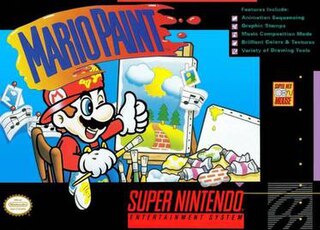
Mario Paint is a 1992 art creation video game developed by Nintendo Research & Development 1 (R&D1) and Intelligent Systems and published by Nintendo for the Super Nintendo Entertainment System. Mario Paint consists of a raster graphics editor, an animation program, a music composer, and a point and click minigame, all of which are designed to be used with the Super NES Mouse peripheral, which the game was packaged and sold with. Per its name, the game is Mario-themed, and features sprites and sound effects that are taken from or in the vein of Super Mario World.
Chessmaster is a chess-playing video game series, which is owned and developed by Ubisoft. It is the best-selling chess franchise, with more than five million units sold as of 2002.

The Super NES Mouse, sold as the Super Famicom Mouse in Japan, is a peripheral created by Nintendo for the Super Nintendo Entertainment System. It was released in 1992, on July 14 in Japan, in August in North America, and on December 10 in Europe. Originally designed for use with the game Mario Paint, the Super NES Mouse was sold in a bundle with the game and included a plastic mouse pad. Soon after its introduction, several other titles were released with Mouse support.

The Software Toolworks was an American software and video game developer based in Novato, California. The company was founded by Walt Bilofsky in 1980 out of his Sherman Oaks garage, which he converted into an office, to develop software for the Heathkit H89 microcomputer. It quickly expanded into video games, releasing Airport and MyChess in 1980; other notable games include Chessmaster 2000, Mavis Beacon Teaches Typing, and Mario Is Missing!. Toolworks merged with its distributor, Software Country, in 1986 and, after going public in 1988, acquired IntelliCreations, DS Technologies, and Mindscape. By 1994, Toolworks employed 600 people and had a revenue of US$150 million. In May that year, it was acquired by Pearson plc for $462 million, which converted it to bear the Mindscape identity by November.
FX Fighter is a series of video games developed by Argonaut Software and published by GTE Entertainment. The two games in the series are FX Fighter (1995) for DOS CD-ROM and FX Fighter Turbo (1996) for Windows 95.

Mario's Game Gallery is an American compilation of games published by Interplay Productions and developed by Presage Software, Inc. for DOS, Windows and Macintosh. It was released in 1995 in the United States. It was later re-released as Mario's FUNdamentals for Macintosh in 1996, and for Windows in January 1997, though it was published by Mindscape for the DOS and Windows versions and by Stepping Stone for the Macintosh version. It was also developed by Brainstorm Entertainment.
Europress was a British magazine and software publisher based in Adlington, near Macclesfield, Cheshire. Their magazine publishing business was previously known as Database Publications. The software division was renamed in 1999 to Actualize.

The Playroom is a video game first created in 1989 for DOS, Apple II and Macintosh computers. The game was compatible with the TouchWindow utility. It was ported to the Amiga and FM Towns computers in 1992 and 1994 respectively and then remade for Microsoft Windows and Macintosh in 1995. It was designed for ages 3 to 6 manufactured by Broderbund. A follow-up game titled The Treehouse came in 1991 as well as a sequel to this game, called The Backyard in 1993.
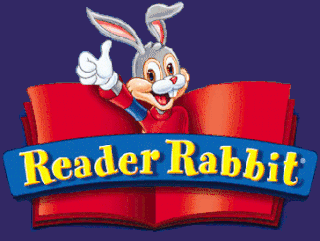
Reader Rabbit is an educational game franchise created in 1984 by The Learning Company. The series is aimed at children from infancy to the age of nine. In 1998, a spiritual successor series called The ClueFinders was released for older students aged seven to twelve.
There have been a variety of Sesame Street video games released for video game platforms. Most of the Sesame Street video games were published and developed by NewKidCo.
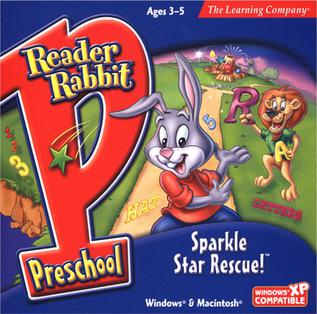
Reader Rabbit Preschool: Sparkle Star Rescue is a game in the Reader Rabbit series by The Learning Company. The title was released in 2001. The game is recommended for ages 3–6. The game teaches "shape and size recognition, letter recognition and listening", among other skills, including maths-related ones. The game was also released for the Nintendo Wii by Graffiti Entertainment, simply titled Reader Rabbit Preschool.
Scetlander was a software publisher which released titles for various 8- and 16-bit home computer systems in the 1980s and 1990s.
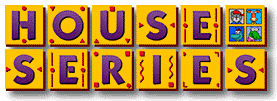
Early Learning House or simply the House Series is a collection of four main educational video games and two compilations for the Windows and Macintosh platforms, developed by Theatrix Interactive, Inc. and published by Edmark software. Each different game focuses on a particular major learning category with selectable skill settings for preschooler, kindergarten and elementary learners. Millie's Math House (1992) on mathematics, Bailey's Book House (1993) on language, Sammy's Science House (1994) on science, and Trudy's Time and Place House (1995) on history and geography. A spin-off, Stanley's Sticker Stories (1996), sees players create animated storybooks with the series' characters. Millie & Bailey Preschool and Millie & Bailey Kindergarten each contain the combined activities from two of the four software products. In addition the programs can be configured by an adult mode to suit students with special needs. Most of the activities in every game have two modes, one to allow learners to explore and try it out for themselves and the other for learners to follow specific tasks set by the game characters. Learners also have the option to print pictures of creative activities and record sounds in phonics activities. Later the games were re-developed by Houghton Mifflin Harcourt Learning Technology and re-published by The Learning Company with newer graphics and additional activities.
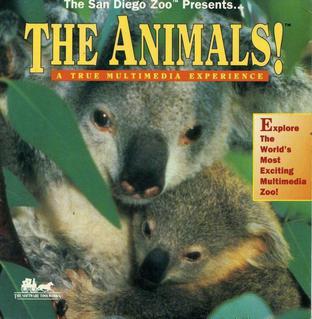
The San Diego Zoo Presents: The Animals is an educational game developed by The Software Toolworks and Arnowitz Studios and published by The Software Toolworks in 1992 for Windows. Arnowitz Studios developed the multimedia assets and The Software Toolworks did the software development. A release for 3DO was planned for release in November 1993 but was ultimately launched in 1994. The game was then ported to Sega CD in 1994.
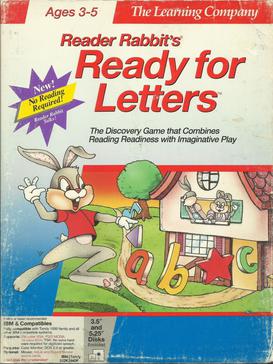
Reader Rabbit's Ready for Letters is a 1992 video game and the fifth game of the Reader Rabbit franchise. Although a spin-off title, it is designed for ages 3 to 6 to teach prereaders about becoming literate and phonics.















